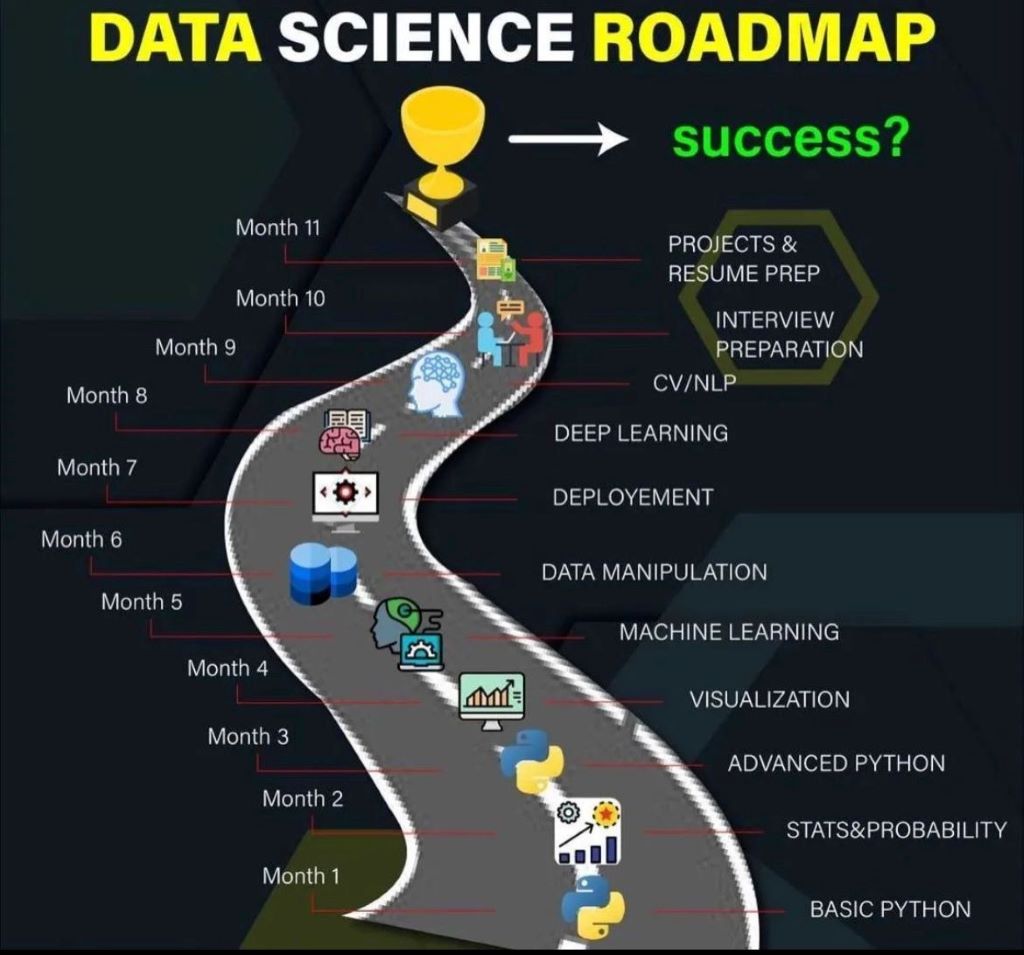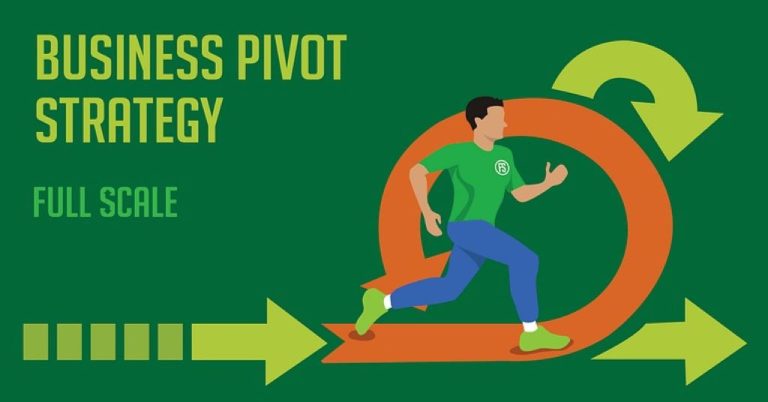
Complete Roadmap for Data Analysts And Data Scientists: Skills, Tools, and Career Growth
In today’s digital era, data drives every major decision. From businesses to governments, everyone depends on data-driven insights for strategic planning, growth, and innovation. This surge in demand for data expertise has led to the explosive growth of roles like Data Analysts and Data Scientists. These two distinct yet complementary roles have become some of the most sought-after positions in technology and beyond.
However, navigating the journey to become a skilled Data Analyst or Data Scientist requires a deep understanding of the necessary skills, tools, and career development strategies. This article outlines the roadmap for aspiring data professionals, guiding you through the must-have competencies, tools of the trade, and career progression paths.
The Role of a Data Analyst vs. Data Scientist: Key Differences
Before diving into the skills and tools needed, it’s essential to distinguish between Data Analysts and Data Scientists. Both roles focus on working with data, but their responsibilities and the depth of expertise required differ.
- Data Analyst: Primarily responsible for interpreting and visualizing data, Data Analysts extract actionable insights from existing datasets. They tend to focus on historical data, helping businesses understand past performance and trends. Skills such as proficiency in Excel, SQL, and visualization tools like Tableau or Power BI are common for Data Analysts.
- Data Scientist: On the other hand, Data Scientists are expected to have a more advanced skill set. They engage in predictive analytics, machine learning, and statistical modeling. They work with complex datasets and may even create algorithms that can forecast future outcomes. A deep understanding of programming (Python, R), machine learning, and big data tools is crucial for Data Scientists.
Both paths offer immense career potential, but they require distinct learning paths and skill sets. Understanding these differences will help you tailor your learning and career development strategy.
Read More: WEBSITES TO FIND WORK IN DIGITAL MARKETING
Essential Skills for Data Analysts
For Data Analysts, proficiency in several foundational skills is essential for success in this rapidly evolving field.
a) Statistical Analysis and Mathematical Proficiency
Data Analysts need a solid understanding of statistics and mathematics. Techniques like regression analysis, hypothesis testing, and probability theory are common in the job. Understanding these concepts allows analysts to analyze trends and generate meaningful insights.
b) SQL and Database Management
SQL (Structured Query Language) remains one of the most powerful tools for querying and manipulating databases. Data Analysts frequently work with databases to extract and transform data for analysis, making SQL a core skill.
c) Data Visualization
Data visualization is a critical skill for Data Analysts. Tools like Tableau, Power BI, and Google Data Studio allow professionals to turn raw data into visually compelling reports. The ability to create interactive and understandable visual representations of data is highly valued.
d) Excel Proficiency
Despite the rise of sophisticated tools, Excel remains indispensable in data analysis. Its advanced functions, including pivot tables, VLOOKUP, and data manipulation, are essential for handling data quickly and effectively.
e) Data Cleaning
Cleaning and preprocessing data are crucial skills. In most real-world data analysis, raw data is messy. A Data Analyst’s ability to clean and standardize data before analysis is crucial for accuracy.

Essential Skills for Data Scientists
Data Scientists need a broader and more advanced set of skills, often building on those of Data Analysts but incorporating deeper technical expertise.
a) Programming Languages: Python and R
Python is the go-to programming language for Data Scientists due to its simplicity and the rich ecosystem of libraries (e.g., pandas, NumPy, scikit-learn). R, meanwhile, is heavily used in academic and statistical contexts. Proficiency in these languages is essential for data manipulation, cleaning, and performing machine learning.
b) Machine Learning and AI
One of the defining features of Data Scientists is their expertise in machine learning. Whether supervised, unsupervised, or reinforcement learning, Data Scientists must understand how to build and evaluate models. Skills in tools like TensorFlow, PyTorch, and Scikit-learn are critical for machine learning.
c) Big Data Technologies
In an age where data volumes are rapidly growing, Data Scientists must understand big data tools. Hadoop, Spark, and Kafka are essential in processing and analyzing large datasets efficiently. These tools enable Data Scientists to work with complex and massive datasets that typical data analysis tools cannot handle.
d) Data Wrangling
Data wrangling refers to the process of cleaning and organizing raw data into a usable format. This includes removing outliers, filling in missing values, and transforming data. Data wrangling is often the first step before applying advanced analytics or machine learning.
e) Statistical Modeling and Advanced Analytics
Data Scientists are expected to apply complex statistical models to make predictions. Whether it’s linear regression or deep learning models, a thorough understanding of statistical modeling techniques is necessary for success.
Tools Every Data Analyst and Data Scientist Should Master
To succeed as a Data Analyst or Data Scientist, familiarity with the following tools is essential.
a) Data Visualization Tools (Tableau, Power BI)
Data visualization tools help to present data insights clearly. Tableau and Power BI are widely used for creating dashboards, reports, and interactive visualizations. Understanding how to use these tools is essential for both Data Analysts and Data Scientists.
b) Database Tools (SQL, MongoDB)
SQL is the standard for querying relational databases. For non-relational databases, Data Scientists may use MongoDB or other NoSQL databases. Mastery of these tools allows professionals to work with a variety of data structures.
c) Cloud Platforms (AWS, Azure, Google Cloud)
The cloud is a major part of modern data processing. Platforms like AWS, Microsoft Azure, and Google Cloud provide tools for big data storage, machine learning, and deployment. Knowledge of these platforms is increasingly important for data professionals working with large-scale data.
d) Machine Learning Frameworks (TensorFlow, PyTorch)
For Data Scientists, frameworks like TensorFlow and PyTorch are critical for building and training machine learning models. These tools help streamline the development of machine learning applications and deep learning networks.
e) Data Analytics Software (SAS, SPSS)
For more traditional roles, tools like SAS and SPSS may be essential for data analysis and statistical modeling. These tools are used widely in industries like healthcare and finance, where complex statistical methods are frequently applied.
Career Growth and Opportunities for Data Analysts and Data Scientists
As the demand for data professionals continues to rise, career growth opportunities in the field are abundant. The progression typically follows this path:
- Entry-Level Roles: Starting as a junior Data Analyst or Data Scientist, you’ll focus on learning the basics, assisting senior professionals, and performing fundamental tasks like data cleaning and visualization.
- Mid-Level Roles: As you gain experience, you can take on more complex projects. This phase might involve using machine learning algorithms or managing large-scale data pipelines.
- Senior and Specialized Roles: Senior roles often involve managing data teams, developing advanced predictive models, or driving data strategy. Specialized roles, such as Machine Learning Engineer or Data Architect, are also common for professionals with specific expertise.
- Leadership and Strategic Roles: At the highest levels, data professionals may transition into leadership positions, such as Chief Data Officer (CDO) or Head of Data Science, where they guide the organization’s overall data strategy.
Professional Tips for Data Analysts and Data Scientists
a) Keep Learning and Stay Updated
The world of data analytics and science evolves rapidly. New tools, languages, and techniques are emerging every year. Continuously upgrading your skill set through online courses, certifications, or advanced degrees is crucial for long-term success.
b) Focus on Real-World Projects
Theory is important, but real-world projects and case studies help you apply your knowledge in practical scenarios. Contributing to open-source projects or taking on internships or freelance gigs can provide valuable hands-on experience.
c) Network and Collaborate
Joining professional networks, attending data science meetups, or participating in data competitions (e.g., Kaggle) can help you stay connected to industry trends and broaden your opportunities.
Featured Snippet:
What is the Difference Between Data Analyst and Data Scientist?
Answer: A Data Analyst focuses on interpreting historical data, identifying patterns, and visualizing trends using tools like SQL, Excel, and Tableau. A Data Scientist, however, uses statistical models, machine learning, and programming languages like Python and R to make predictions, analyze large datasets, and build algorithms for future outcomes.
Frequently Asked Questions (FAQs)
-
What is the starting salary for Data Analysts and Data Scientists?
- Data Analysts typically earn between $60,000 and $80,000 annually, while Data Scientists can expect to make between $90,000 and $120,000, depending on location and experience.
-
Which programming language should I learn first?
- Python is highly recommended due to its simplicity and versatility, especially for Data Scientists. For Data Analysts, SQL is essential for querying data.
-
How long does it take to become a Data Scientist?
- It typically takes 1 to 2 years of dedicated learning and hands-on experience to transition into a Data Scientist role, depending on your prior background.
-
Are certifications necessary for a career in data?
- While not mandatory, certifications from platforms like Coursera or edX can help boost your credibility and demonstrate expertise in specific tools or methods.
-
What industries hire Data Analysts and Data Scientists?
- Industries including technology, finance, healthcare, retail, and marketing are major employers of Data Analysts and Data Scientists.
-
Can I switch from Data Analyst to Data Scientist?
- Yes, transitioning from Data Analyst to Data Scientist is common. You’ll need to acquire advanced skills in programming and machine learning.
-
What is the future of data careers?
- The demand for data professionals is expected to continue growing, with roles in artificial intelligence, machine learning, and big data analytics becoming even more integral to businesses.
Conclusion
The roadmap for becoming a Data Analyst or Data Scientist is complex but rewarding. By mastering the right skills, learning the essential tools, and understanding the career growth opportunities, you can position yourself for success in this dynamic and high-demand field. Whether you’re just starting or looking to advance your career, focusing on continuous learning, hands-on experience, and networking will help you thrive in the evolving world of data.
Read More: Professional profiles most in demand in e-Logistics


Average Rating